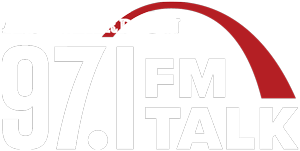Overseeding sounds like a bad thing, right? Something you want to avoid doing to your lawn?
Actually, overseeding is a way to fill in bare spots, improve the density of your lawn, and enhance your lawn’s color. It’s the secret to achieving the beautiful lawn you’ve been wanting.
Maybe you’ve been eyeing the neighbor’s luscious lawn and wondering just how they managed that. It was probably overseeding.
If your lawn looks old, if it needs an increasing amount of water and fertilizer, or if it’s disease and insect prone, it’s the perfect candidate for overseeding.
The Benefits of Overseeding
Overseeding with a newer turfgrass variety can help your older lawn withstand insects, disease, drought, shady conditions, and heavy traffic. The investment in overseeding pays off by reducing the overall amount of fertilizer, water, and pesticides needed throughout the year.
Plus, a renovated, overseeded lawn stays greener longer and looks thicker and healthier.
When is the Best Time to Overseed?
Late summer or early fall is the best time to overseed your lawn. Soil and atmospheric temperatures are most favorable for optimum seed germination and growth at that time of year.
With adequate moisture, fertilizer, and sunlight, your new seedlings will be established before cooler fall weather sets in. Also, weeds are less of a factor during late summer and early fall, which gives your grass seedlings a better environment to develop and flourish.
Overseeding Aftercare
Depending on the conditions of your lawn and the type of seed, new grass seed will usually start to emerge in about a week after seeding. An overseeded lawn can be fully established in about eight weeks.
Proper watering is critical to make your overseeding efforts a success:
- Immediately after overseeding, water heavily to wash grass seeds into slits.
- For the first 10-14 days – or until the grass seeds germinate – water lightly on a daily basis, soaking the first inch of soil.
- After germination, water less frequently, but allow for deeper soaking and penetration into the soil. This will encourage deeper root growth.
- After your grass is established, water at the recommended level for the type of grass planted.
The key is patience. Proper overseeding will produce a healthier, more luscious-looking lawn that will respond better to mowing, fertilization, and water. But it does take some time, patience, and dedication to make your lawn look healthy.
Get the Healthy Lawn You Want with the Team You Trust
You’ll see the difference in everything we do – from understanding every challenge as you see it, to leaving no questions unanswered about how we can help your lawn stay green and healthy.
We are Pro Outdoor. And if you believe like us that quality, service, and value still matter, then you’re ready to grow with us.
Contact Us and start the journey to a healthier lawn.
